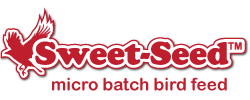Best Places to Hang Hummingbird Feeders

Hummingbird feeders are essential to attract hummingbirds and enjoy outstanding views of these flying jewels. Where, exactly, are the best places to hang hummingbird feeders, not just for the birds, but for birders as well? Thoughtful feeder placement can make a dramatic difference for how popular and successful a nectar feeding station can be.
Why Position Matters
A poorly positioned hummingbird feeder can have a wide range of problems. Birds may not notice the feeder, or the feeder could be overwhelmed with insects and other pests, such as squirrels or raccoons. In a bad location, nectar may spoil more quickly, or the feeder may leak and spill. Poor placement can also have obstructed views for watching hummingbirds, and the feeder may be difficult to reach for refilling and cleaning.
In a good position, however, a hummingbird feeder can be much easier to enjoy. The feeder will be safer for birds to visit, with fewer leaks and less wasted nectar. The nectar can also stay fresher, and can become a treasured garden accent that provides a burst of color and activity in a favorite viewing spot. That viewing spot may also provide exceptional opportunities to observe, identify, and even photograph hummingbirds.
Factors to Consider for Hummingbird Feeder Placement
Every yard is different, and every birder has to decide where it is best to place a hummingbird feeding station. Different factors that should be considered when finding the best places to hang hummingbird feeders include…
- Visibility – If hummingbirds can’t see the feeder, they won’t visit it. Positioning the feeder where it will be noticeable from the air is important, and placing it in dappled sunlight that will show off sparkles on the feeder will catch birds’ attention.
- Convenience – The feeder should be near comfortable perches and safe spaces to be convenient to hummingbirds, and it should be near a pathway or easy to reach to be convenient to birders for refilling and cleaning.
- Safety – A hummingbird feeder should be high enough and hung with baffles so cats and other roaming predators can’t threaten hungry birds. Furthermore, the feeder should be far enough away from windows so hummingbirds aren’t at risk from dangerous collisions.
- Distance – While hummingbirds will visit a feeder no matter how far away from the house it might be placed, hanging the feeder closer to a favorite window will help birders see hungry visitors better, so long as the view is not blocked by plants or other obstacles.
- Shade – To help keep nectar cool and fresh, feeders should be hung where they will be shaded during the hottest part of the day. This will keep nectar from being wasted due to spoilage, and will keep hummingbirds more comfortable when visiting.
- Security – A feeder must be hung firmly and securely so it is not easy to tip or tilt, which could create spills and waste. Spilled nectar will attract unwanted pests, and if the feeder were to fall, glass reservoirs or other parts could easily break.
- Spacing – Hummingbird feeders could be clustered together to accommodate more hungry hummers, or they can be spread out to provide more space for each bird. Nectar feeders should always be separated from seed feeders, however, to keep birds comfortable.
- Privacy – Hummingbirds can be aggressive and territorial, and may guard feeders to prevent other birds from sipping. By hanging hummingbird feeders apart from other feeders and one another, more hummers will have the chance to feed.
The more thoughtful birders can be about where to hang hummingbird feeders, the more attractive the feeders will be to visiting hummingbirds.
Best Places for Hummingbird Feeders
There are many different places that can be ideal for hanging hummingbird feeders. Some of the best spots include…
- Near a favorite window, such as in the kitchen or home office, where there will be good views, but where a screen or decals help keep hummingbirds safe from window collisions.
- From a gutter, awning, roofline, or gazebo where the feeder will catch some sunlight for sparkles and reflections to attract the attention of passing birds.
- In the middle of a dedicated hummingbird garden or flowerbed with plenty of colorful, nectar-rich blooms to feed even more hummingbirds.
- From a deck or balcony railing with an extendable arm to give the feeder some space but still keep it conveniently close for feeding and refilling.
- Near a garden bench or other favorite sitting area with great views to see the birds, but facing east to minimize the sun in a birder’s eyes when watching hummers.
- Roughly 10-15 feet from a thicket, large rosebush, or dense shrubbery that will provide safe cover and shelter for hummingbirds to retreat if they feel threatened.
The more thought that is put into where to hang a hummingbird feeder, the more attractive the feeder will be to every hungry hummer in the neighborhood. With the right placement, a feeder can attract an entire flock of hummingbirds, bringing joy to every birder fascinated by these tiny, welcome birds.
